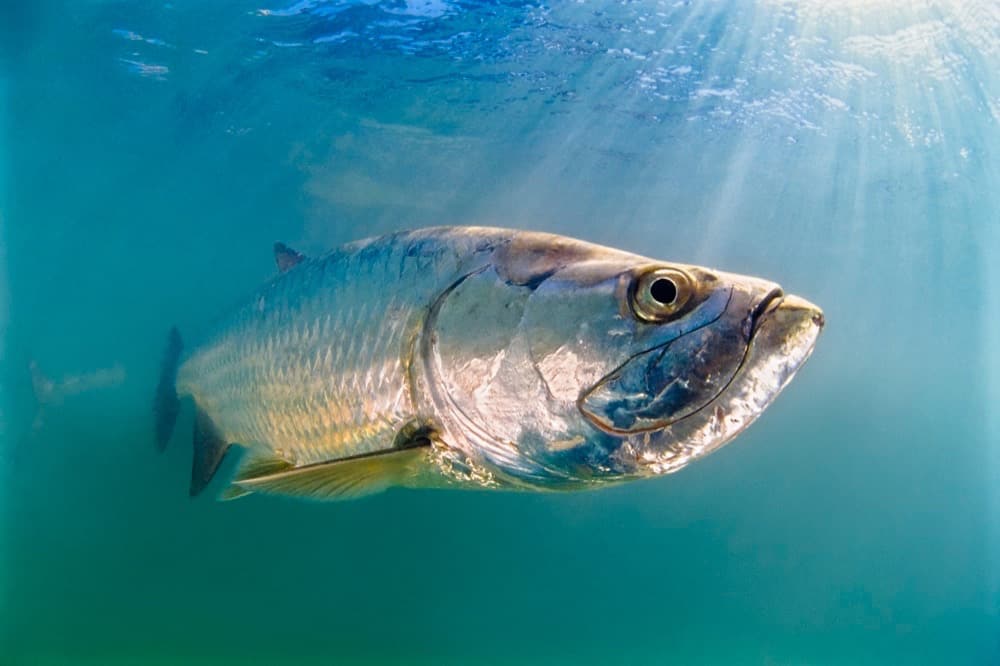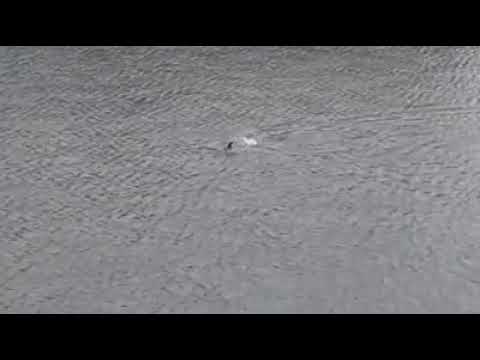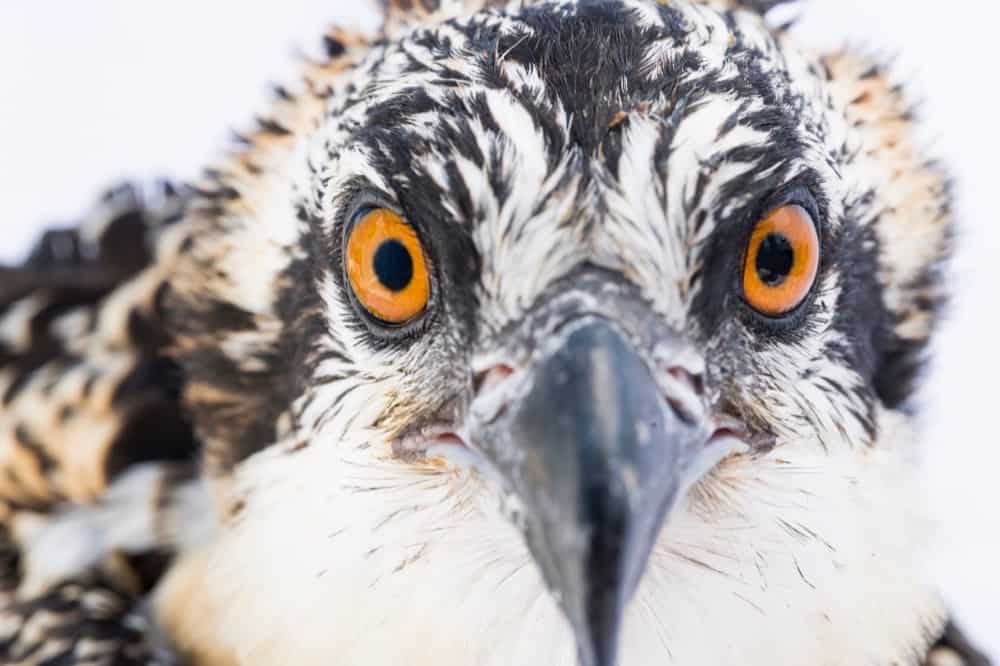Hunting for tarpon on Virginia’s Eastern Shore
On a rain-soaked spring day, my mind wandered back to when social distancing meant venturing off the beaten path to try and catch fish. One vivid recollection from two years back: three of us in a skiff, throttle pinned, skating through a narrow, seaside channel on Virginia’s lower Eastern Shore.
To the disinterested, everything we passed would have appeared featureless and bland. But below the surface, seagrass meadows swayed like verdant ribbons. Coastal wetlands rich with spartina gave way to bay berry and wax myrtle thickets, and then to stands of pines on the higher ground. On mud flats and beaches, herons, egrets, and other wading birds patrolled the edges. Gulls, pelicans, and sea birds of varying stripes wheeled overhead. Sand dollars, ribbed scallops, and whelk shells adorned sandy beaches. And although the oyster reefs were covered by the near-super tide, you knew they were there; and if you carelessly strayed outside the thin channel, they’d remind you and your gelcoat of their presence.
From Chincoteague Bay down through Magothy Bay, the labyrinth of sloughs, cuts, and channels that dissect these barrier islands seems endless. We knew we weren’t the first to poke our skiffs into such secretive salt marsh guts, but it felt a bit that way. On this August day we came not to explore these magical waters. We were on the hunt for tarpon.
It may surprise you to learn that tarpon fishing on Virginia’s coastal bays dates back to the 1930s. The first intentional catch in Virginia waters, in 1955, is credited to Claude Rogers, who used to run the state’s popular Saltwater Fishing Tournament. In the decades that followed, anglers in our region who routinely target tarpon have been as tight-lipped about specific tactics and locations as the Tabasco folks are about their magic hot-sauce recipe.
Tarpon are one of the most challenging gamefish under the best of circumstances. They are not only spectacular fighters that leap and twist but elusive, even ghostlike at times—here, there, and everywhere, or nowhere at all. So when we launched from the public landing at Oyster, with nary a clue as to where the tarpon might be, I wasn’t the least bit dissuaded from the quest. Many of my best adventures have begun with worse odds.
An hour after entering a large embayment not too far from the Atlantic, we finally spied tarpon. At first it was just a single fish, but soon we saw a handful cavorting in an area the size of a football stadium. Near as I could tell, there were at least four, maybe six silver kings—could have been 12, I really don’t know—of varying sizes. None were small.
They’d surface to sip air, roll, swirl, and then with no rhyme or reason they’d disappear, only to repeat their choreographed aquabatics 100 yards away 10 minutes later. The biggest I saw was easily more than 100 pounds. It rocketed out of the water like a muscular, armor-plated missile. For more than two hours, my companions and I shadowed them, relentlessly tossing big swimming plugs, rubber shad-like lures, and even top-water poppers into their midst, all for naught. But it was a great show.
Many successful tarpon anglers use conventional rod-reel outfits in the 50-pound class. They often drift fresh-cut bunker or live croakers or spot, at different depths. I’ve been told three rods is plenty because if you do have multiple hook-ups, the ensuing mayhem becomes unmanageable. Both times I’ve tarpon fished I’ve used a seven-foot spinning rod (heavy power) matched to a 5,000-sized reel loaded with 40-pound test braid and a 60-pound leader.
Catching a tarpon in Virginia’s seaside waters is enough of a challenge, but getting one to eat a fly, much less bring it to hand—well, that’s downright miraculous. But it has been done, more times than I would have thought possible. In fact, in the summer of 2018, Annapolis resident John Loe tells me he fought one for an hour and a half. It pulled him two miles from the original point of hooking up. When the big fish finally tired enough for Loe to get it boatside, he and his guide Ken Eshelman quickly took measurements: 63 inches long with a 29-inch girth, putting it at an estimated 85 pounds, he said, using the Bonefish & Tarpon Trust’s formula to estimate weight. The Virginia state record is a 130-pound fish caught by Barry Truitt in 1975, off of Oyster. Virginia offers anglers a citation plaque for releasing any tarpon measuring at least 36 inches, which all do in these waters, experts say.
Marine biologists believe each spring tarpon follow baitfish like mullet up the coast from Florida or the Gulf of Mexico. July is prime tarpon fishing time, if there is such a thing, in Virginia’s back bays. A handful roam into the Chesapeake proper, and catches have been documented in Maryland waters, too. By the end of September, these silver kings are southbound.
Excuse me a moment while I step atop my conservationist soapbox: Tarpon fishing should be strictly catch-and-release. Why kill such a magnificent creature? True, I have yet to bring a Virginia tarpon to hand, but when I do, I know I won’t lift it into the boat for a hero photo. As powerful as they are, they’re not unbreakable. I’ll keep it in the water, I’ll lower my head over the gunwale and have a buddy snap a quick shot. Then we’ll resuscitate it enough for a healthy release. Granted, there are a lot of “ifs” in my plan, but that’s fishing.
Everyone needs a respite from a fractious world, especially one mired in a pandemic. My advice? Head into that labyrinth of barely explored channels, where salt-drenched air washes over you at daybreak. I guarantee you’ll find it cathartic and rejuvenating. As to your chances of actually catching a tarpon? Well, yours are as good as mine. h




